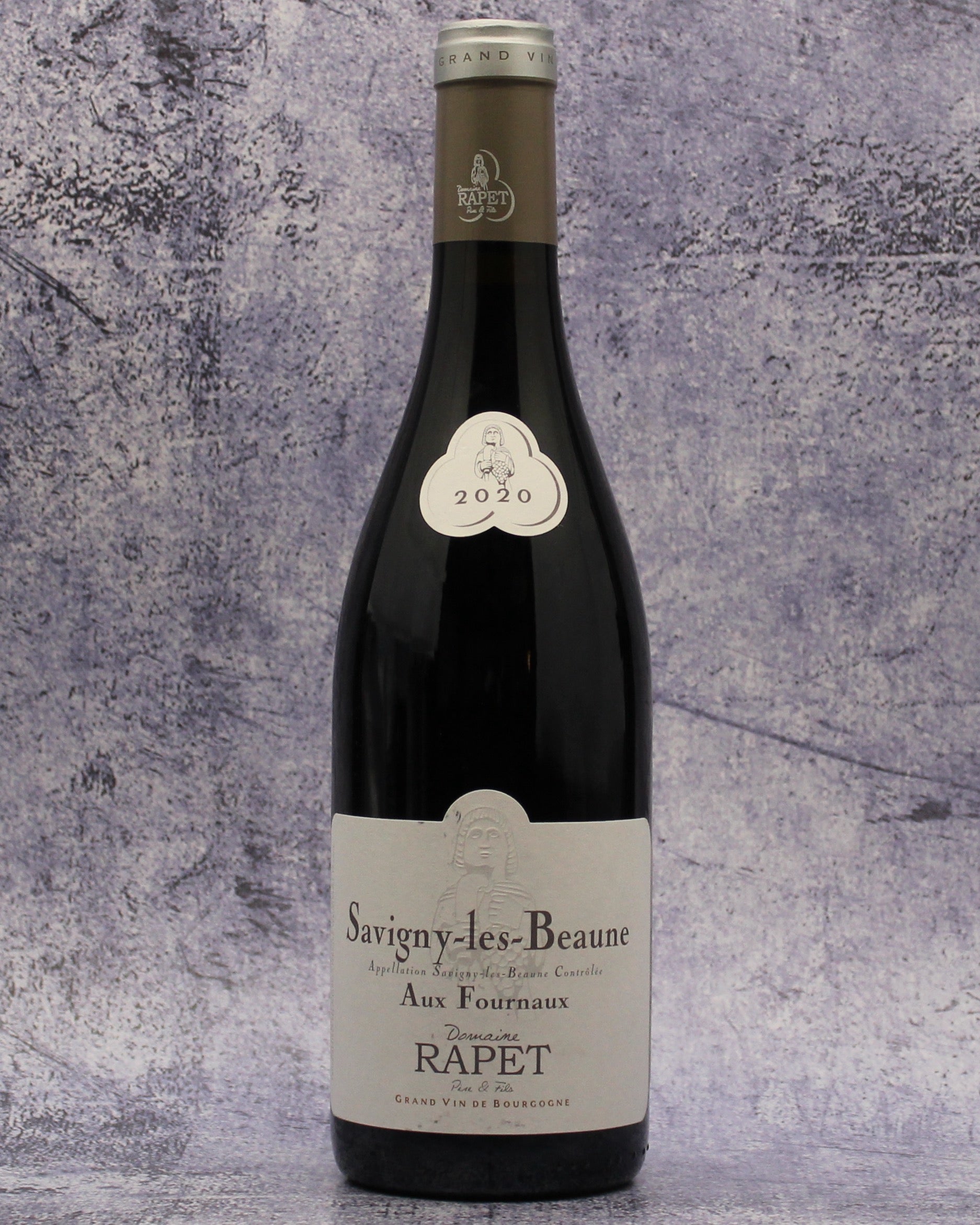Description
From: Burgundy, France
Varietal: Pinot Noir
Taste: The 2020 Rapet Savigny-les-Beaune Aux Fourneaux is a remarkable expression of the Rapet family's dedication to the art of winemaking. Sourced from a parcel that is over fifty years old, this red Burgundy showcases both power and elegance, with discreet tannins and an enchanting bouquet of aromas.
On the nose, the Aux Fourneaux reveals a harmonious blend of Morello cherries, raspberries, and black currants. As the wine opens up, these fruity notes are complemented by subtle hints of spice, earth, and well-integrated oak, adding depth and complexity to the overall profile.
The palate is a delightful journey through layers of flavor, starting with the vibrant red and dark fruits discovered on the nose. The wine's acidity is well-balanced, providing a refreshing backbone that supports the fruit and allows it to shine. The tannins, while present, are refined and unobtrusive, adding structure and gently guiding the wine towards a lengthy and satisfying finish.
Pairing: The 2020 Rapet Savigny-les-Beaune Aux Fourneaux is a versatile wine that can be enjoyed with a variety of dishes. Its fruit-forward nature and balanced acidity make it a perfect match for dishes featuring roasted or grilled meats, such as beef, lamb, or game. The wine's earthy and spicy undertones also complement mushroom-based dishes, as well as those featuring root vegetables and herbs. For a classic Burgundian pairing, serve this wine alongside a plate of coq au vin (recipe below) or beef bourguignon.
Coq au Vin
By Melissa Clark
From Jeff Patten, Flatiron Wine & Spirits. Of the villages in the Beaune, Savigny-les-Beaune is the most puzzling. I kind of understand why St. Aubin is off the radar, as it occupies a separate valley from the classic villages of the Cote d'Or. And it's no surprise that Santenay isn't anywhere near as famous as villages further north, which benefit from super star producers and terroir that is superior to all but the most northerly corners of Santenay. But Savigny? This is a village that boasts well known producers like Pavelot, Chandon de Briailles and Simon Bize. The premier crus are some of the best in the Cote de Beaune for red wine. So why no love?
The best explanation I've seen is historical. It is in this northern part of the Cote de Beaune that red and white vines are mixed up the most (we're not so far here from the hill of Corton, the one part of Burgundy where you get both Grand Cru red and Grand Cru white). A couple of generations ago, Savigny was no exception, with plenty of vines planted to both colors. And the color white here doesn't just mean Chardonnay. Plenty of Pinot Blanc and Pinot Gris were planted here as well.
The thing is, in Savigny, until pretty recently, the red and white grapes were often vinified together. Yes, plenty of those "red" Savignys also had some percentage -- 15% say -- of Chardonnay or Pinot Blanc or Pinot Gris or some mixture of the three. So the wine was lighter, and therefore less prized.
Although Chardonnay is still grown in Savigny-les-Beaune -- as well as a tiny amount of the other white grames -- those grapes are now used to produce white wine (although the AOC still allows up to 15% white wine grapes). And the whites can be very good. The Pinot Noir today almost always remains pure and the wine is often excellent. But reputations have a way of lingering, and, thanks to this history, Savigny-les-Beaune is still very much treated as second tier.
And that, for me, is why Savigny-les-Beaune is such a fruitful village for finding value. Let me say something unequivocal: at this moment in time, Savigny-les-Beaune provides the very best bang for your buck in all of Burgundy. And with 1.8 million bottles of wine in a normal year, you will find something to drink.
Where it is. That "les" in the middle of the name is an old local word for "near". Savigny is near Beaune. Just to the north of it, and just a little west of the main north south corridor. It's other neighbors, just to the northeast, are Aloxe Corton and Pernand Vergelesses. Across the main north south road from Savigny lies Chorey-les-Beaune (Chorey "near" Beaune).
The domaine. The Rapet family estate has a history going back almost three centuries. A treasured “tastevin” (wine-taster) dating from 1765, on which the family name appears, is carefully kept from generation to generation. Vincent, the grandson of Robert and son of Roland, along with his wife, Sylvette, are now hard at work managing the estate.
Based in Pernand-Vergelesses, the Rapet holdings comprise 20 hectares of vines in the villages of Pernand-Vergelesses, Savigny les Beaune, Aloxe Corton and Beaune.
Taste: Elegant, and marked by dominant aromas and flavors of Morello cherries, black currant, and raspberry, then subsequently developing notes of undergrowth after a few years in the cellar.
Pairing: A delicate wine with discreet tannins that pairs well with red or white meat as well as game birds.

